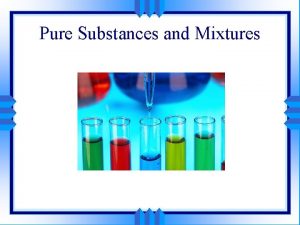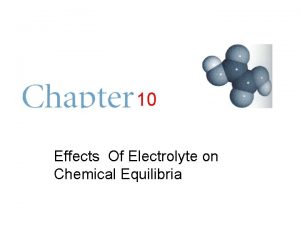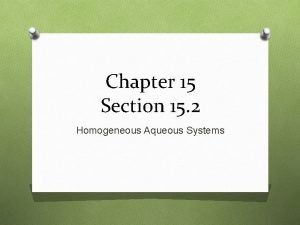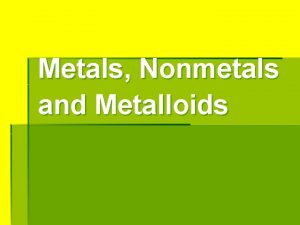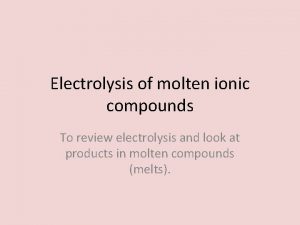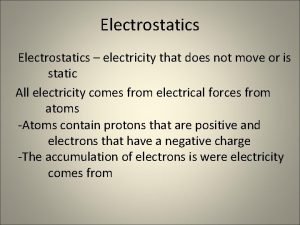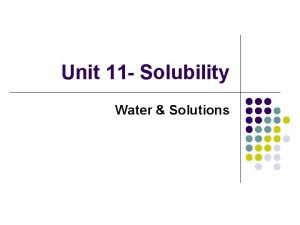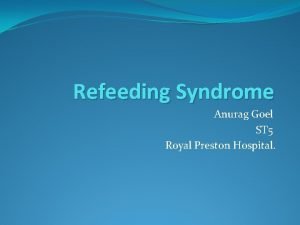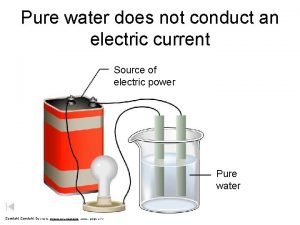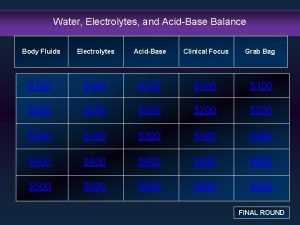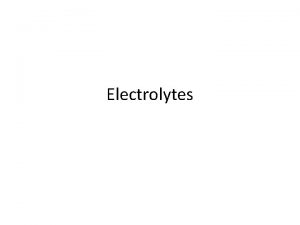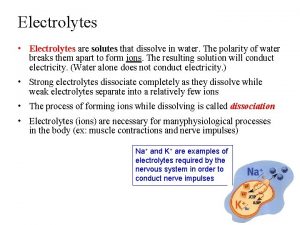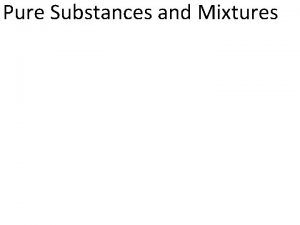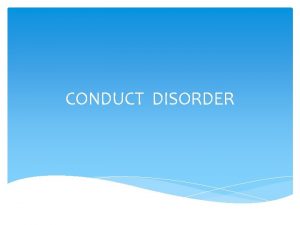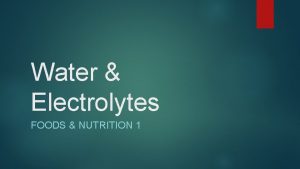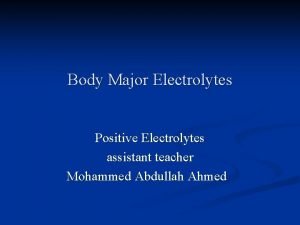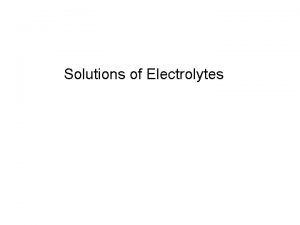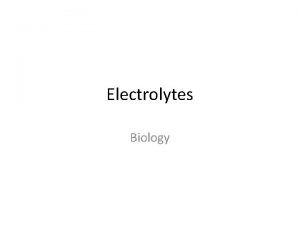Electrolytes Pure water does not conduct electricity It













- Slides: 13

Electrolytes Pure water does not conduct electricity. It is the substances dissolved that permit the passage of current. These substances are called “electrolytes”

Electrolyte An electrolyte is a substance that when dissolved in water permits the passage of an electric current

Electric conductibility The electric conductibility of a solution is its capacity to allow the passage of an electric current

Different water/Different electrolytes Ocean water, river water and lake water all have electrolytes with different concentrations. Many living organisms need electrolytes to survive.

Electric dissociation is the separation of a dissolved substance into two ions of opposing charges

Strength of an electrolyte The strength of an electrolyte depends on the rate of dissociation. The higher the rate the stronger the electrolyte (the more ions forming the stronger the electrolyte) Na. Cl : very good electrolyte (high dissociation rate) HF: weak electrolyte (low dissociation rate)

Types of electrolytes Acids, bases and salts are the 3 important types of electrolytes ,

Acids An acid is a substance that release H+ ions in an aqueous solution (Aqueous solution = water as its solvent)

Bases A base is a substance that releases OH- ions in an aqueous solution

Salts A salt is a substance that provides a bond between a metal ion (+) and a non metal ion (-)

p. H The p. H is a property that permits to distinguish a solution from acidic, basic or neutral. We can use an indicator to determine the p. H

p. H scale The p. H scale goes from 0 to 14. It determines the degree of acidity of a substance p. H < 7 acid p. H > 7 base p. H = 7 neutral The p. H scale is logarithmic meaning that the difference of 1 unit between two substances is in reality 10 times greater i. e. A p. H of 3 is 10 times more acidic than a p. H of 4

 Substance
Substance Unit 2 materials technology
Unit 2 materials technology You light up my life answer key
You light up my life answer key Water and water and water water
Water and water and water water How does electrolytes affect the chemical equilibria?
How does electrolytes affect the chemical equilibria? Do pickles conduct electricity
Do pickles conduct electricity Example of metalloids
Example of metalloids Panic electrolysis
Panic electrolysis Static electricity and current electricity
Static electricity and current electricity Current electricity
Current electricity Magnetism vocabulary
Magnetism vocabulary F=kqq/d^2
F=kqq/d^2 Solubility curve
Solubility curve Whats refeeding syndrome
Whats refeeding syndrome
